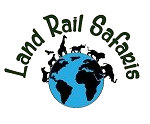TRIP OVERVIEW
A “Manyara, Ngorongoro” safari in Tanzania typically refers to a shorter, but incredibly impactful, safari itinerary focusing on two of the most popular and wildlife-rich destinations in the Northern Safari Circuit. This combination is ideal for those with less time or a slightly tighter budget, as it still delivers an authentic and breathtaking African safari experience.
Here’s an overview of what to expect from a Lake Manyara and Ngorongoro safari:
1. Lake Manyara National Park
- Location: Lake Manyara is conveniently located at the base of the Great Rift Valley escarpment, approximately a 2 to 3-hour drive from Arusha, the safari hub of northern Tanzania. Its accessibility makes it a common first stop on many safari itineraries.
- Unique Ecosystems: Despite being one of Tanzania’s smaller national parks (around 330 sq km, with two-thirds of that being the lake itself), Lake Manyara boasts remarkable ecological diversity. You’ll find:
- Groundwater Forest: A lush, emerald-green forest at the park’s entrance, fed by underground springs, offering a stark contrast to the dry plains. This is where you might spot blue monkeys, vervet monkeys, and even large elephants Browse among the trees.
- Acacia Woodlands: Drier areas with iconic acacia trees.
- Open Grasslands: Ideal for grazers like zebras, wildebeest, and giraffes.
- The Alkaline Lake: Lake Manyara itself, a shallow soda lake that attracts thousands of flamingos (especially during the wet season, from November to April) and other water birds such as pelicans, storks, and cormorants.
- Wildlife Highlights:
- Tree-Climbing Lions: Lake Manyara is one of the few places in Africa where lions are known to regularly climb trees and lounge on branches. While not guaranteed, spotting them is a major highlight.
- Elephants: A healthy population of elephants, often seen in the groundwater forest.
- Baboons: The park is famous for its large troops of baboons, often encountered along the roads.
- Hippos: Can be seen in the Hippo Pool, often submerged with only their eyes and ears visible.
- Giraffes, Zebras, Wildebeest, Buffalo, various antelopes (impala, dik-dik).
- Birdlife: Over 400 bird species, making it a fantastic destination for birdwatchers.
- Activities: Primarily game drives. Some operators also offer night game drives (unique to Manyara in the northern circuit) and guided walking safaris. A Treetop Walkway also offers a unique perspective.
2. Ngorongoro Conservation Area (NCA) & Ngorongoro Crater
- Location: Directly adjacent to the Serengeti, about a 2-3 hour drive from Lake Manyara. The crater is within the larger Ngorongoro Conservation Area, a UNESCO World Heritage Site.
- The Crater Itself: The star attraction is the Ngorongoro Crater, the world’s largest intact, unflooded volcanic caldera. It’s a massive natural amphitheater, approximately 20 km (12 miles) wide and 600 meters (2,000 feet) deep, with its own unique ecosystem on the crater floor. It’s often referred to as “Africa’s Eden” or the “8th Natural Wonder of the World” due to its unparalleled wildlife density.
- Wildlife Highlights (Crater Floor):
- The “Big Five”: Ngorongoro offers one of the highest chances of seeing all of the “Big Five” (lion, leopard, elephant, rhino, buffalo) in a single day due to the enclosed nature of the crater.
- Black Rhino: It is one of the most reliable places in East Africa to spot the critically endangered black rhino.
- High Density of Wildlife: An estimated 25,000 to 30,000 large mammals reside on the crater floor year-round, including vast herds of wildebeest, zebras, gazelles, and buffalo, which in turn attract a high concentration of predators (lions, hyenas, cheetahs, leopards).
- Diverse Habitats within the Crater: The crater floor features grasslands, swamps, a soda lake (Lake Magadi), and patches of forest, supporting this incredible diversity.
- Birdlife: Excellent birding with over 350 species, including large flocks of flamingos in Lake Magadi.
- Unique Aspects of the NCA:
- Coexistence with Maasai: Unlike national parks, the Ngorongoro Conservation Area allows for human habitation. The Maasai people traditionally live and graze their cattle alongside the wildlife, offering unique cultural interaction opportunities (e.g., visits to Maasai bomas).
- Olduvai Gorge: Within the NCA, this famous archaeological site is crucial for understanding human evolution, often included as a brief stop en route to or from the Serengeti.
- Stunning Views: The views from the crater rim, especially at sunrise or sunset, are absolutely breathtaking.
Itinerary details
You will be picked from the hotel in Arusha after breakfast by the driver guide and drive to Lake Manyara National park. Check in upon arrival in the park and later have a thrilling game drive before you proceed to Ngorongoro Island. This park is well known for its beautiful wild animals such as the elephants, wildebeest along with so many giraffes and antelope. It’s also a perfect habitat for the Manyaras healthy lion that are popular for their tree climbing characters. Drive to Ngorongoro Highland for dinner and overnight stay at the Gibbs Farm.
DAY 2: NGORONGORO-ARUSHA
After breakfast your driver will descend with you to the crater floor for a striking game drive. Ngorongoro crater is known to be one of the largest unbroken in active volcanic caldera on earth. You will ascend to the rim before your departure to Arusha for dinner and overnight stay.
Included in the Safari Cost
- Pick up from the airport
- Accommodation as per itinerary.
- 3 meals Breakfast, Lunch & Dinner a day while on safari.
- Services of our Professional Guide/Driver.
- All park entrance fees.
- All game drives.
- Accommodation in Arusha 2 night’s bed and breakfast.
- Transport from Nairobi.
Excluded in the Safari Cost
- Personal Insurance
- Alcohol & Soft drink
- Items of personal use
- Balloon safari
- Masai village
- Tips
